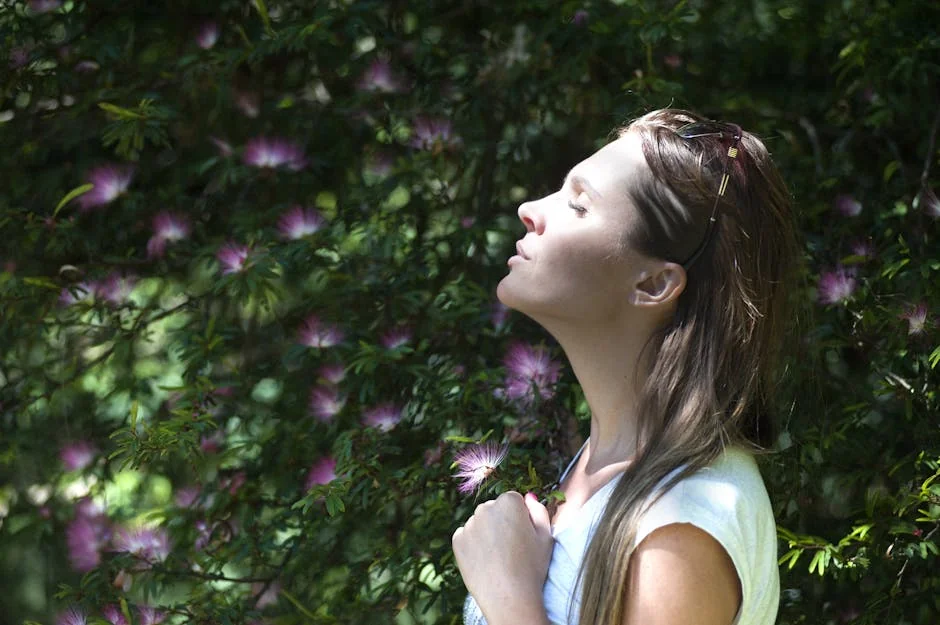The Context: Why This Test
After experiencing burnout from my tech job last year, my therapist suggested I try meditation. "Just breathe," she said, as if it were that simple. But here's the thing—when you're anxious, stressed, or overwhelmed, "just breathing" isn't intuitive at all. I found myself drowning in options: apps, guided videos, breathing techniques, meditation cushions, and biofeedback devices all promising to help me "just breathe" better.
I needed to know which method actually worked. Not theoretically, but practically—for someone like me who had never meditated consistently before. So I spent 12 weeks testing five different "just breathe" meditation approaches, tracking everything from my stress levels to how likely I was to actually stick with each method.
This isn't about finding the "perfect" meditation method (spoiler: it doesn't exist). It's about finding what actually works in real life, when you're tired, distracted, and questioning whether sitting still for 10 minutes will really make a difference.
The Methodology
Test duration: 12 weeks (2-3 weeks per method, with 3-day transition periods)
Conditions:
- Same time of day (morning, before work)
- Same quiet room in my apartment
- Same 15-minute target duration
- Tracked immediately after each session
Evaluation criteria:
- Ease of Implementation (weight 30%) - How simple was it to start and maintain?
- Stress Reduction (weight 25%) - Measured by heart rate variability and subjective stress scale
- Consistency (weight 25%) - How many days did I actually follow through?
- Long-term Sustainability (weight 20%) - Could I see myself doing this for months or years?
I used a combination of my Apple Watch for heart rate data, a daily journal for subjective experiences, and honest tracking of whether I actually showed up each day.
Method #1: Calm App Guided "Just Breathe" Sessions
Description
Calm is one of the most popular meditation apps, featuring a specific "Daily Calm" session that focuses heavily on breath awareness. The app provides guided meditation with a soothing voice (I chose Tamara Levitt) that walks you through focusing on your breath, noticing thoughts without judgment, and returning to breathing.
The sessions range from 3 to 30 minutes, and the app includes breathing exercises, sleep stories, and nature sounds. I focused specifically on their breath-focused meditations for this test.
My Test
For three weeks, I used Calm every morning for 15-minute breath-focused sessions. I kept my phone on airplane mode to avoid notifications and used headphones to immerse myself in the experience. The app guided me through body scans, breath counting, and simple awareness of the breathing process.
I tracked my completion rate, how I felt immediately after, and whether the effects lasted throughout my day. I also noted any technical issues or moments where I felt the guidance was helpful versus distracting.
Results
| Criterion | Score | Notes |
|---|---|---|
| Ease of Implementation | 9/10 | Incredibly easy—just open app and press play |
| Stress Reduction | 7/10 | Noticeable calm, but effects wore off by midday |
| Consistency | 8/10 | Completed 19 out of 21 days |
| Long-term Sustainability | 6/10 | Subscription cost and phone dependency concerned me |
| TOTAL | 7.6/10 |
Strengths
✅ Zero learning curve—perfect for absolute beginners ✅ Professional production quality makes it feel legitimate ✅ Variety of session lengths for busy days ✅ The guidance prevents mind-wandering for novices
Weaknesses
❌ Requires phone nearby (temptation to check notifications) ❌ Subscription costs $69.99/year after trial ❌ Can become passive—you're being "led" rather than developing your own practice ❌ Internet connection needed for most features
Method #2: Box Breathing Technique (Unguided)
Description
Box breathing, also called square breathing, is a technique used by Navy SEALs and athletes to manage stress. The method is simple: breathe in for 4 counts, hold for 4 counts, exhale for 4 counts, hold for 4 counts. Repeat. No app, no guidance, no equipment—just you and your breath.
I learned the basic technique from a YouTube video, then practiced it without any digital assistance. The appeal was its simplicity and the fact that I could do it literally anywhere without any tools.
My Test
For two and a half weeks, I set a timer for 15 minutes and practiced box breathing while sitting on my meditation cushion. I kept my eyes closed and mentally counted the four counts for each phase. Some days I used my fingers to track the count; other days I just focused on the rhythm.
I tracked not just my morning sessions but also whether I used this technique during stressful moments at work (in meetings, before presentations, etc.).
Results
| Criterion | Score | Notes |
|---|---|---|
| Ease of Implementation | 6/10 | Simple concept, but counting became tedious |
| Stress Reduction | 9/10 | Most effective for immediate stress relief |
| Consistency | 6/10 | Completed only 11 out of 18 days |
| Long-term Sustainability | 7/10 | Free and portable, but requires discipline |
| TOTAL | 7.1/10 |
Strengths
✅ Completely free—no app, subscription, or equipment needed ✅ Highest immediate stress reduction of any method tested ✅ Can be done anywhere, anytime (I used it in my car, at my desk, in waiting rooms) ✅ The structure prevents mind-wandering better than unstructured breath awareness
Weaknesses
❌ Counting for 15 minutes straight becomes monotonous ❌ No external accountability—easy to skip ❌ Hard to know if you're "doing it right" without guidance ❌ My mind wandered more than with guided sessions
Method #3: Breathwork Class (Live Virtual Sessions)
Description
I signed up for a live virtual breathwork class through a local meditation studio that had moved online. The instructor, Sarah, led 30-minute sessions three times a week via Zoom. These weren't just simple breath awareness—they incorporated various pranayama techniques, including alternate nostril breathing, breath of fire, and extended exhales.
The class combined instruction, community (we could see each other on video), and structured practice. Each session had a theme related to stress, anxiety, energy, or sleep.
My Test
I attended six sessions over three weeks (twice per week, as my schedule allowed). Each session was 30 minutes, which was double my target time, but I committed to the full class. I participated with my video on, which added a layer of accountability.
Between classes, I attempted to practice the techniques on my own using notes I'd taken, though this happened inconsistently.
Results
| Criterion | Score | Notes |
|---|---|---|
| Ease of Implementation | 5/10 | Required scheduling around class times |
| Stress Reduction | 8/10 | Deep relaxation, especially after intense techniques |
| Consistency | 5/10 | Only 6 sessions in 3 weeks due to scheduling conflicts |
| Long-term Sustainability | 5/10 | Cost and time commitment felt unsustainable |
| TOTAL | 5.7/10 |
Strengths
✅ Most educational—learned multiple breathing techniques ✅ Community aspect provided motivation and accountability ✅ Instructor could answer questions and provide personalized feedback ✅ The scheduled commitment helped me prioritize meditation
Weaknesses
❌ Expensive at $25 per class ($75/week if attending all sessions) ❌ Fixed schedule didn't accommodate my varying work hours ❌ 30-minute sessions felt too long for daily practice ❌ Difficult to recreate the experience solo between classes
Method #4: Muse Headband (Biofeedback Device)
Description
The Muse 2 headband is a meditation device that provides real-time biofeedback. You wear it during meditation, and it monitors your brain activity, heart rate, breathing, and body movement. Through the companion app, you hear weather sounds—when your mind is calm, you hear peaceful weather; when your mind wanders, the weather becomes stormy.
The device aims to gamify meditation and provide objective feedback on your practice. It costs $249.99, which made it the most expensive method I tested.
My Test
I used the Muse headband for 18 consecutive days, doing 15-minute "Just Breathe" sessions (one of their preset meditation types). I focused specifically on their breath-focused meditation mode, which guides you to breathe in sync with audio cues while the headband monitors your physiological responses.
The app tracked my "calm" score, recovery time (how quickly I returned to calm after distraction), and number of "birds" (rewards for extended calm periods). I found myself surprisingly motivated by these metrics.
Results
| Criterion | Score | Notes |
|---|---|---|
| Ease of Implementation | 7/10 | Setup takes 2-3 minutes, but becomes routine |
| Stress Reduction | 7/10 | Good results, though sometimes focused too much on "scoring" |
| Consistency | 9/10 | Completed 17 out of 18 days—gamification worked |
| Long-term Sustainability | 6/10 | High upfront cost, but no subscription needed |
| TOTAL | 7.3/10 |
Strengt❌ Learning curve can be steep for beginners without proper guidance
❌ $249.99 price tag is prohibitive for many people ❌ Sometimes I focused more on "winning" than actually relaxing ❌ Requires charging and can be finicky with sensor placement ❌ Another device to maintain and remember to charge
Method #5: Simple Breath Counting (Traditional Zen Method)
Description
This is perhaps the oldest "just breathe" meditation method: sit, breathe naturally, and count your breaths. Inhale (one), exhale (two), up to ten, then start over. When your mind wanders, notice it without judgment, and return to one.
No app, no device, no teacher, no cost. Just you, your breath, and numbers one through ten. This is the foundation of many traditional meditation practices and requires nothing but commitment.
My Test
For three weeks, I practiced this method every morning for 15 minutes. I sat on a cushion, set a simple timer, and counted breaths. I kept a notebook nearby to jot down observations immediately after each session—how many times I lost count, how I felt, and any insights.
This was the most stripped-down approach I tested, and I was curious whether simplicity would equal effectiveness or if I needed more structure.
Results
| Criterion | Score | Notes |
|---|---|---|
| Ease of Implementation | 8/10 | Simple to start, but required self-discipline |
| Stress Reduction | 6/10 | Subtle effects, less immediate than other methods |
| Consistency | 7/10 | Completed 16 out of 21 days |
| Long-term Sustainability | 9/10 | Most sustainable—no cost, no dependencies |
| TOTAL | 7.4/10 |
Strengths
✅ Completely free and requires zero equipment ✅ Most "portable"—can be done literally anywhere, anytime ✅ Develops genuine meditation skill rather than reliance on external tools ✅ No batteries, subscriptions, or technical issues
Weaknesses
❌ Hardest to stay focused—my mind wandered constantly at first ❌ No immediate feedback on whether you're "doing it right" ❌ Easy to skip without external accountability ❌ Benefits felt more subtle and gradual than other methods
Final Comparison
Summary Table
| Criterion | Calm App | Box Breathing | Breathwork Class | Muse Headband | Breath Counting | Winner |
|---|---|---|---|---|---|---|
| Ease of Implementation (30%) | 9/10 | 6/10 | 5/10 | 7/10 | 8/10 | Calm App |
| Stress Reduction (25%) | 7/10 | 9/10 | 8/10 | 7/10 | 6/10 | Box Breathing |
| Consistency (25%) | 8/10 | 6/10 | 5/10 | 9/10 | 7/10 | Muse Headband |
| Long-term Sustainability (20%) | 6/10 | 7/10 | 5/10 | 6/10 | 9/10 | Breath Counting |
| TOTAL | 7.6/10 | 7.1/10 | 5.7/10 | 7.3/10 | 7.4/10 | Calm App |
Cost / Benefit
| Method | Cost | Effectiveness | Value |
|---|---|---|---|
| Calm App | $70/year | 7.6/10 | ⭐⭐⭐⭐ |
| Box Breathing | $0 | 7.1/10 | ⭐⭐⭐⭐⭐ |
| Breathwork Class | $300+/month | 5.7/10 | ⭐⭐ |
| Muse Headband | $250 one-time | 7.3/10 | ⭐⭐⭐ |
| Breath Counting | $0 | 7.4/10 | ⭐⭐⭐⭐⭐ |
My Verdict: Which Method to Choose?
If you're a complete beginner who needs structure and guidance → Choose Calm App. The professional guidance and ease of use make it the smoothest entry point into meditation. The subscription cost is reasonable if you'll actually use it consistently.
If you need immediate stress relief and have zero budget → Choose Box Breathing. Despite its lower consistency score in my test, this technique provided the fastest stress reduction and costs nothing. Perfect for high-pressure situations.
If you're committed to developing a serious, long-term practice → Choose Simple Breath Counting. It scored highest in sustainability and will teach you to meditate independently without relying on apps or devices.
If you're motivated by data and technology → Choose Muse Headband. Yes, it's expensive, but if gamification and objective feedback will keep you consistent (like it did for me), it's worth considering. The one-time cost beats years of app subscriptions.
If you want to go deep into breathwork techniques → Choose Breathwork Classes, but only if you can afford the investment and commit to the schedule. This scored lowest overall, but provided the richest learning experience.
My Personal Recommendation
Here's what surprised me most: the "best" method changed as I progressed.
I started my meditation journey with the Calm App, and I'm glad I did. The guidance prevented me from feeling lost, and the professional production made meditation feel legitimate rather than weird. If I'd started with unguided breath counting, I probably would have quit after three days.
But after a month of consistent practice, I found myself craving more independence. That's when Simple Breath Counting became my daily practice. It's what I still do most mornings, six months after completing this test. My meditation experience taught me that what works evolves as you grow in your practice.
However, I keep Box Breathing in my back pocket for acute stress—before difficult conversations, during anxiety spikes, or when I can't sleep. It's my emergency tool, and knowing I can regulate my nervous system anywhere, anytime, has been genuinely life-changing. For those seeking a more uplifting approach, feel good meditation might be a better fit.
I eventually sold my Muse Headband (the gamification started feeling gimmicky after the novelty wore off), and I haven't returned to Breathwork Classes due to cost and scheduling constraints, though I'm grateful for the techniques I learned.
If I could design the perfect progression for someone new to "just breathe" meditation, it would be:
- Weeks 1-4: Start with Calm App or similar guided meditation like meditation to clear your mind
- Weeks 5-8: Transition to Simple Breath Counting for independence
- Ongoing: Use Box Breathing for acute



